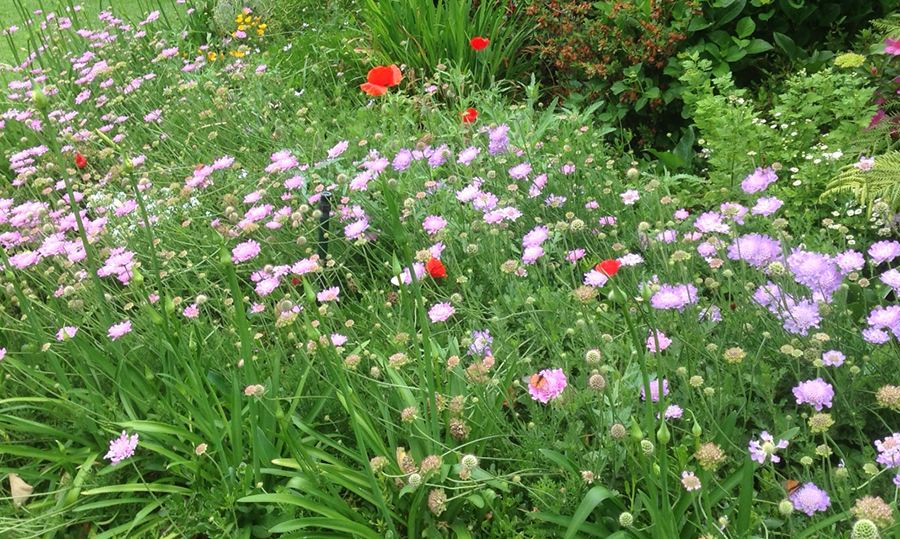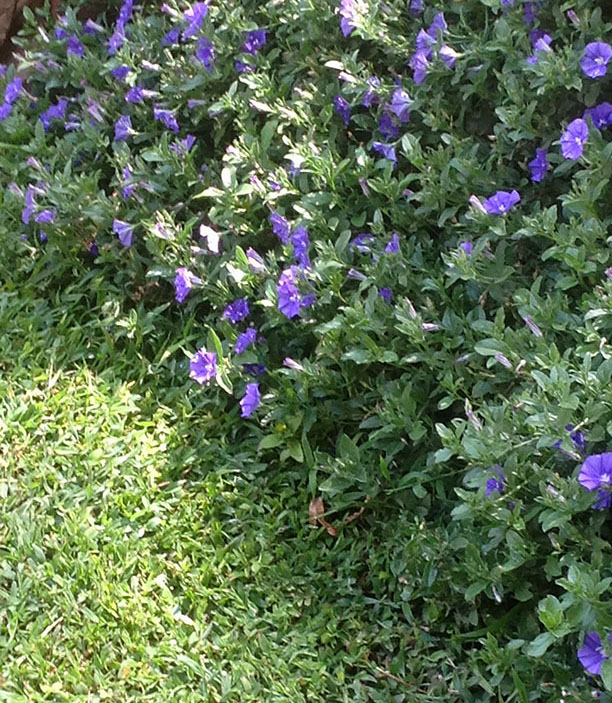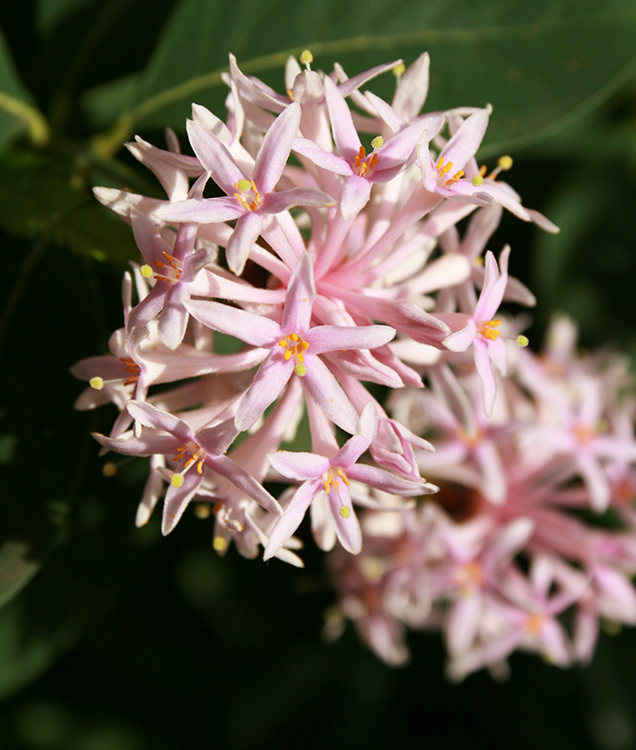A lush garden doesn’t mean loads of watering and plants that require constant attention. By following certain basics, you can save time and money, and with minimum effort, still have a beautiful garden.

Scabious planted with agapanthus
Try these plants for a low-maintenance garden: 46 Water-Wise plants for your garden
1. Grow hardy perennials
Indigenous evergreens like Scabiosa africana and ground-covering Convolvulus sabatius are reliable, hardy and can grow in sun or semi-shade. They flower over a long period without needing to be replaced. Other good examples are agapanthus, dietes, solanum, tulbaghia, plectranthus and daisy bushes.

Convolvulus
2. Reduce the size of the lawn
Lawns help reduce water run-off and clean the air by trapping carbon dioxide, but they do need regular mowing, watering and fertilising. Limit it to a small area to cut down on maintenance. Plant indigenous varieties such as LM Buffalo and Bermuda (Cynodon dactylon), which require less water, and dependable Kikuyu that also survives drought.
3. Add mulch
Mulch not only looks neat and attractive, it helps the soil retain moisture. Organic mulches like compost, bark chips, straw, chopped leaves and pine leaves also break down and nourish the soil. This means less fertiliser is required and plants are healthier. Inorganic mulch like gravel and pebbles minimise evaporation.
Mulching your low-maintenance garden: Different types of mulch to use in your garden

Zinnia
4. Plant self-seeding plants
Encourage plants to self-seed by leaving flowers on the plant to form seed. This also cuts down on deadheading. Echinacea, Californian and Iceland poppies, forget-me-nots, alyssum, Primula malacoides, nasturtiums, marigolds, aquilegia and zinnia are great self-seeders and will pop up year after year.
KEEP READING: SELF-SEEDING VEGETABLES, HERBS AND COMPANION PLANTS
5. Grow like with like
Make a feature of plants with similar needs. For example, group succulents that don’t need much water as they store water in their leaves and aren’t fussy about the soil. Hardy, evergreen indigenous scabious is ideal with plants like agapanthus and salvia. As annuals usually require better soil and more water, plant them in smaller beds, or in pots.
6 Water wisely
Don’t water in the middle of the day and only when necessary. A less frequent but deeper watering is better than small amounts more often as roots are encouraged to grow downwards making plants more drought resistant. A drip irrigation system is the most efficient and economical way of conveying water to the roots.
7. Improve the soil
Before planting, enrich the soil with organic matter such as compost, manure and bonemeal, which will reduce the need for fertilising. Plants growing in well-nourished, well-draining soil are also more resistant to pests and disease.

Pompon tree (Dais cotinifolia)
8. Plant trees
Trees don’t require much maintenance and are a good way to prevent the soil drying out as they provide shade, which reduces evaporation. They also act as windbreaks. Choose fast-growing indigenous trees and shrubs such as sagewood (Buddleja salviifolia) and the pompon tree (Dais cotinifolia). Trees ideal for small spaces are Dovyalis caffra (Kei-apple) and Grewia occidentalis (crossberry).
YOU MIGHT LIKE: 6 Trees ideal for containers
9. Phase out thirsty plants
When buying new plants, replace thirsty specimens with water-wise varieties. Not all exotic plants need a lot of water. Plants with light grey foliage reflect the sun and can survive long, dry stretches; these include lavender, arctotis and gazania. Small and/or hairy foliage also prevents water loss by reducing transpiration. Lamb’s ear, felicia, ericas, rosemary, thyme, confetti bush are good examples.
Also, try this: Replace invasive plants with indigenous alternatives
10. Use containers
Pots and hanging baskets are a tailor-made way of deciding exactly how much gardening you want to do, but make sure you group plants with similar needs. Choose your favourite plants and combine them to create a style that suits your home. Use them to fill bare spaces, as focal points, for screening and as a kitchen garden.

